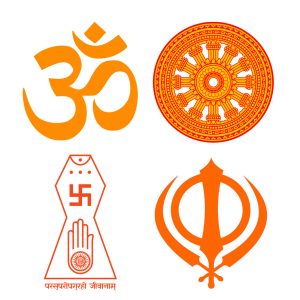Welcome to a journey through time, where we delve into the depths of one of the world’s oldest surviving religions – Zoroastrianism. In this article, we will uncover the origins, beliefs, and influence of this ancient faith that predates Buddhism, Judaism, Christianity, and Islam. Join us as we explore the rich history and enduring legacy of Zoroastrianism.
The Origins of Zoroastrianism
Ancient Beginnings in the Central Asian Steppelands
Zoroastrianism is believed to have emerged in the late second millennium B.C.E. among semi-nomadic pastoralists in the Central Asian steppelands. Its roots can be traced back to Zarathushtra, also known as Zoroaster to the Greeks. Zarathushtra’s teachings form the basis of the earliest texts of the religion, known as the Gathas, which are hymns praising the deity Ahura Mazda.
Good and Evil: The Dualistic Nature of Zoroastrianism
Central to Zoroastrian thought is the concept of duality between good and evil. Ahura Mazda, the “wise lord,” is the source of everything good, while Angra Mainyu, the “destructive spirit,” represents evil and chaos. Zoroastrians view evil as “the lie,” contrasting with the order, truth, and righteousness embodied by Ahura Mazda.
Symbols and Artifacts of Zoroastrianism
The Golden Priest: Unraveling the Mystery

In a gallery at the Getty Villa, a small gold plaque captivates visitors. Depicting a mysterious man in profile, with a hood tightly affixed to his head, a short sword by his side, and a bundle of sticks held in his outstretched arm, the golden priest is an enigmatic figure. Dr. John Curtis, Keeper of Special Middle East Projects at the British Museum, identifies him as a Zoroastrian priest. The bundle of sticks, known as a barsom, is a symbol of the Zoroastrian religion, often used in religious ceremonies or sacrifices. The short sword carried by the priest serves as a means of defending the sacred fire, a vital symbol in Zoroastrianism.
The Cyrus Cylinder: A Reflection of Zoroastrian Influence
Another artifact shedding light on the presence of Zoroastrianism in ancient Persia is the Cyrus Cylinder. The kingly seal of Darius I, successor to Cyrus the Great, portrays the king hunting lions amidst a palm grove. Above him hovers a figure emerging from a winged disc, symbolizing the divine fortune bestowed upon the ruler by Ahura Mazda. The words inscribed on the Cyrus Cylinder reflect a worldview similar to that found in the sacred texts of Zoroastrianism, with a clear distinction between good and bad religion.
Zoroastrianism: Ancient Roots, Modern Practices
The Legacy of Zoroastrianism

Although Zoroastrianism is one of the oldest religions in the world, with teachings that have influenced subsequent faiths, it is now practiced by a relatively small number of adherents. There are approximately 130,000 Zoroastrians worldwide, with significant communities in Iran, India, North America, the United Kingdom, and Australasia. Despite its relatively small following, Zoroastrianism continues to play a vital role in preserving cultural heritage and fostering a sense of identity for its adherents.
Zoroastrianism Today: A Global Community
The tour of the Cyrus Cylinder across the United States has provided an opportunity for local Zoroastrians to reconnect with their ancient heritage. It has also allowed visitors from diverse faith backgrounds to gain insights into this millennia-old religion and ponder its significance within one of the world’s great ancient cultures. The practice of Zoroastrianism today encompasses a wide range of rituals, ceremonies, and traditions that vary among different communities, reflecting the evolution and adaptation of the faith over time.
Conclusion
As we conclude our exploration of Zoroastrianism, we have journeyed through time to unravel the origins, beliefs, and symbols of one of the world’s oldest surviving religions. From the enigmatic golden priest to the profound influence of Zoroastrianism on ancient Persia, this ancient faith continues to leave an indelible mark on our world. As we consider its enduring legacy and the global community of Zoroastrians, we recognize the importance of preserving and understanding this rich cultural heritage.



No comments! Be the first commenter?